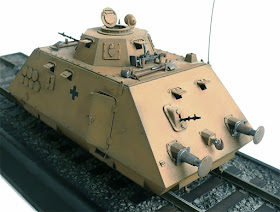And now Ladies and Gentlemen, it is time to break out the tinfoil hats.
From Wikipedia"
George Adamski (April 17, 1891 – April 23, 1965) was a Polish-born American citizen who became widely known in ufology circles, and to some degree in popular culture, after he claimed to have photographed ships from other planets, met with friendly Nordic alien Space Brothers, and to have taken flights with them. The first of the so-called contactees of the 1950s, he was called a "philosopher, teacher, student and saucer researcher," though his claims were met with skepticism.
On October 9, 1946, during a meteor shower, Adamski and some friends claimed that while they were at the Palomar Gardens campground, they witnessed a large cigar-shaped "mother ship." In 1947, Adamski took a photograph of what he claimed was the 1946 cigar-shaped "mother ship" crossing in front of the moon over Palomar Gardens.
On May 29, 1950, Adamski took a photograph of what he alleged to be six unidentified objects in the sky, which appeared to be flying in formation. Adamski's May 29, 1950, UFO photograph was depicted in an August 1978 commemorative stamp issued by the island nation of Grenada in order to mark the "Year of UFOs."
On November 20, 1952, Adamski and several friends were in the Colorado Desert near the town of Desert Center, California, when they purportedly saw a large submarine-shaped object hovering in the sky. Believing that the ship was looking for him, Adamski is said to have left his friends and to have headed away from the main road. Shortly afterwards, according to Adamski's accounts, a scout ship made of a type of translucent metal landed close to him, and its pilot, a Venusian called Orthon, disembarked and sought him out.
Orthon is said to have returned the plate to Adamski on December 13, 1952, at which point it was found to contain new strange symbols. It was during this meeting that Adamski is said to have taken a now famous UFO photograph using his 6-inch (150 mm) telescope.
In 1954, Desmond Leslie is said to have witnessed several UFOs with Adamski while visiting him in California. He described one of them in a letter he sent to his wife while he was in San Diego:
... a beautiful golden ship in the sunset, but brighter than the sunset ... It slowly faded out, the way they do.In 1957 Adamski received a letter signed "R.E. Straith," alleged representative of the "Cultural Exchange Committee" of the U.S. State Department. The letter said the U.S. Government knew that Adamski had spoken to extraterrestrials in a California desert in 1952, and that a group of highly placed government officials planned on public corroboration of Adamski's story. Adamski was proud of this endorsement and exhibited it to support his claims. However, in 2002 ufologist James W. Moseley revealed that the letter was a hoax. Moseley said he and his friend Gray Barker had obtained some official State Department letterheads, created the R.E. Straith persona, and then written the letter to Adamski as a prank. According to Moseley, the FBI investigated the case and discovered that the letter was a hoax, but charges were not filed against Moseley or Barker. Moseley also wrote that the FBI informed Adamski that the Straith letter was a hoax and asked him to stop using it as evidence in support of his claims, but that Adamski refused and continued to display the letter in his lectures and talks.
In May 1959, Adamski received a letter from the head of the Dutch Unidentified Flying Objects Society informing him that she had been contacted by officials at the palace of Queen Juliana of the Netherlands and "that the Queen would like to receive you." Adamski informed a London newspaper about the invitation, which prompted the court and cabinet to request that the queen cancel her private audience with Adamski, but the queen went ahead with the audience, saying, "A hostess cannot slam the door in the face of her guests." After the audience, Dutch Aeronautical Association president Cornelis Kolff said, "The Queen showed an extraordinary interest in the whole subject." Wire services such as United Press International and Reuters sent the story out, and newspapers around the world ran it. On May 19, 1959, The Straits Times ran the story. The Sydney Morning Herald ran it on May 20, 1959, along with an image titled "The 'Moon Man.'" On May 21, 1959, the Rockford Register-Republic ran the article, and the Los Angeles Times ran it on May 27, 1959.[
Adamski believed that the photographs of the far side of the Moon that were taken by the Soviet lunar probe Luna 3 in 1959 were altered to depict a barren, lifeless surface when in fact there were cities, trees, and snow-capped mountains there instead.




















































